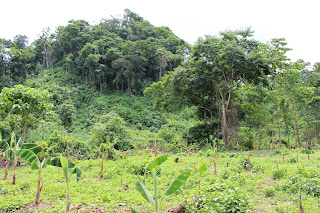The Art of Making Pilapil
Like a light linen shawling on an appallingly sunny day, the newly germinated seedlings wait patiently for the rice bed to finish. The typical fields that sway to the movement of the blowing winds are yet to be seen. Guarded by a bamboo fence, I inspected closely one of the narseri or seedling nurseries. They are beautifully laid out like a sod carpeting a small portion of the rice field getting ready for a three-month journey right before they reach our table plates. If I am to be one of these seedlings, not knowing our end game, the zeal of excitement might have taken over me days before I get transplanted to the tubigan (rice fields).
The rice fields arent exactly ready yet when we visited the farm. Apart from the more popular bayanihan, the Mangyan Iraya tribe practices saknungan where 5-10 members of the community work together in the rice fields or in any agricultural farms like the kaingin. Mr. Babit Renangyan was working alone that day. I was instantly tempted to grab the shovel from him to try constructing the pilapil myself. Pilapil is a folk term referring to the raised soil that separates each bed. Holes and ditch are to strategically place in one corner of the bed to transfer the water from one to another. I couldnt begin to imagine the required ingenuity and agility to master such tedious work. Mr. Babit emphasized that it only takes him an hour or less to construct one perimeter of pilapil. Given the hectares he has to plow and attend to, that sounds just perfect to finish the art of making pilapil in a day or two.
My grandfather isnt really strict about asking his grandchildren to work in one of his farms. I never tried this back when I was little when all I could do is eat mangoes and bananas, and swim in the river. I gave my best shot, hitting with all of the strength I gained from our pack lunch, I was no way near from the amount of soil Mr. Renangyan dug. I tried it once more, and again, and again, and again. We all ended up laughing. What I removed from three minutes of shoveling can be done in 10 seconds or so by the locals. I wasn't particularly ashamed. It is one of the tricks and experiences I had to learn to finish my thesis.
Photos by: Shaira Salazar






Comments
Post a Comment